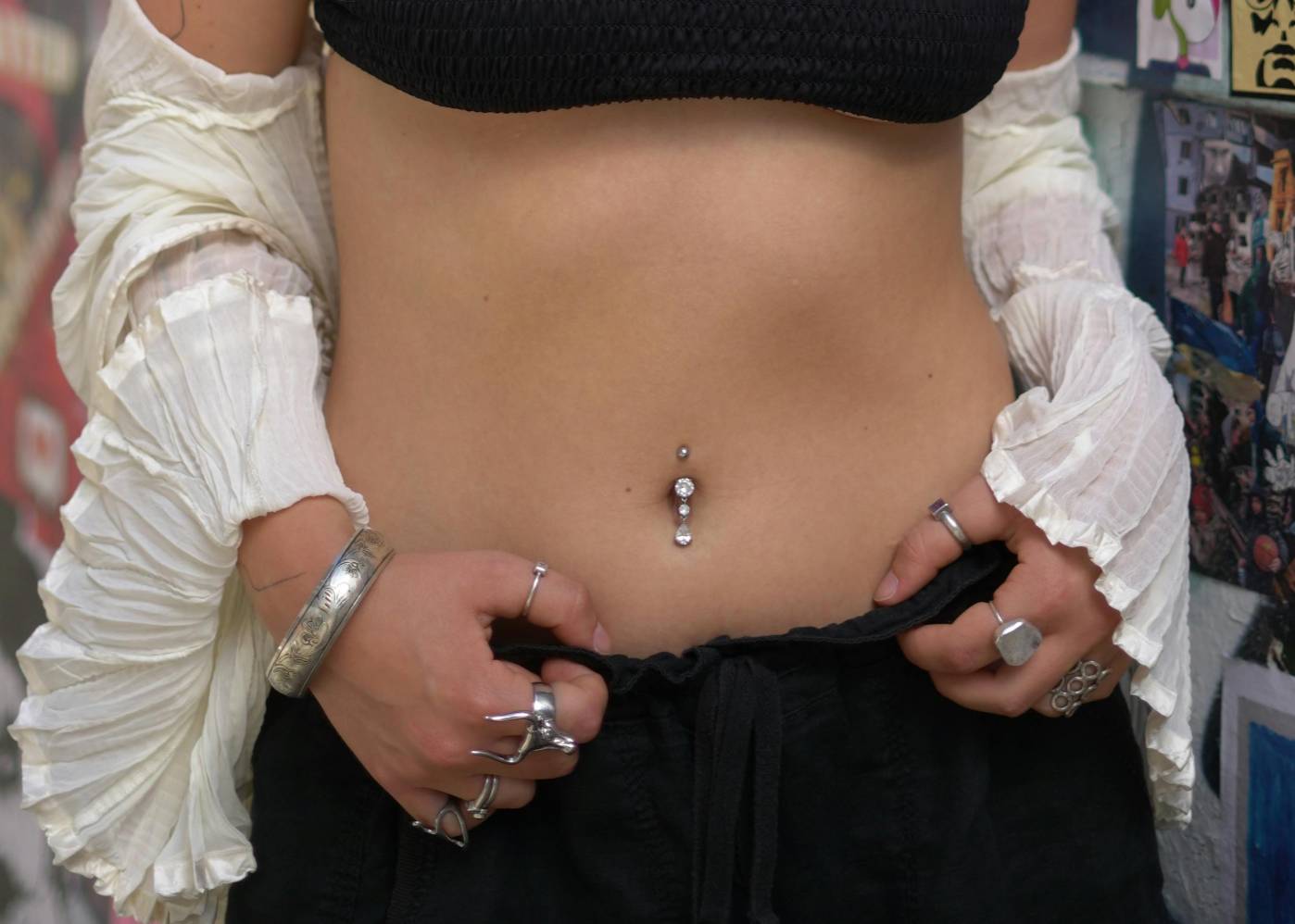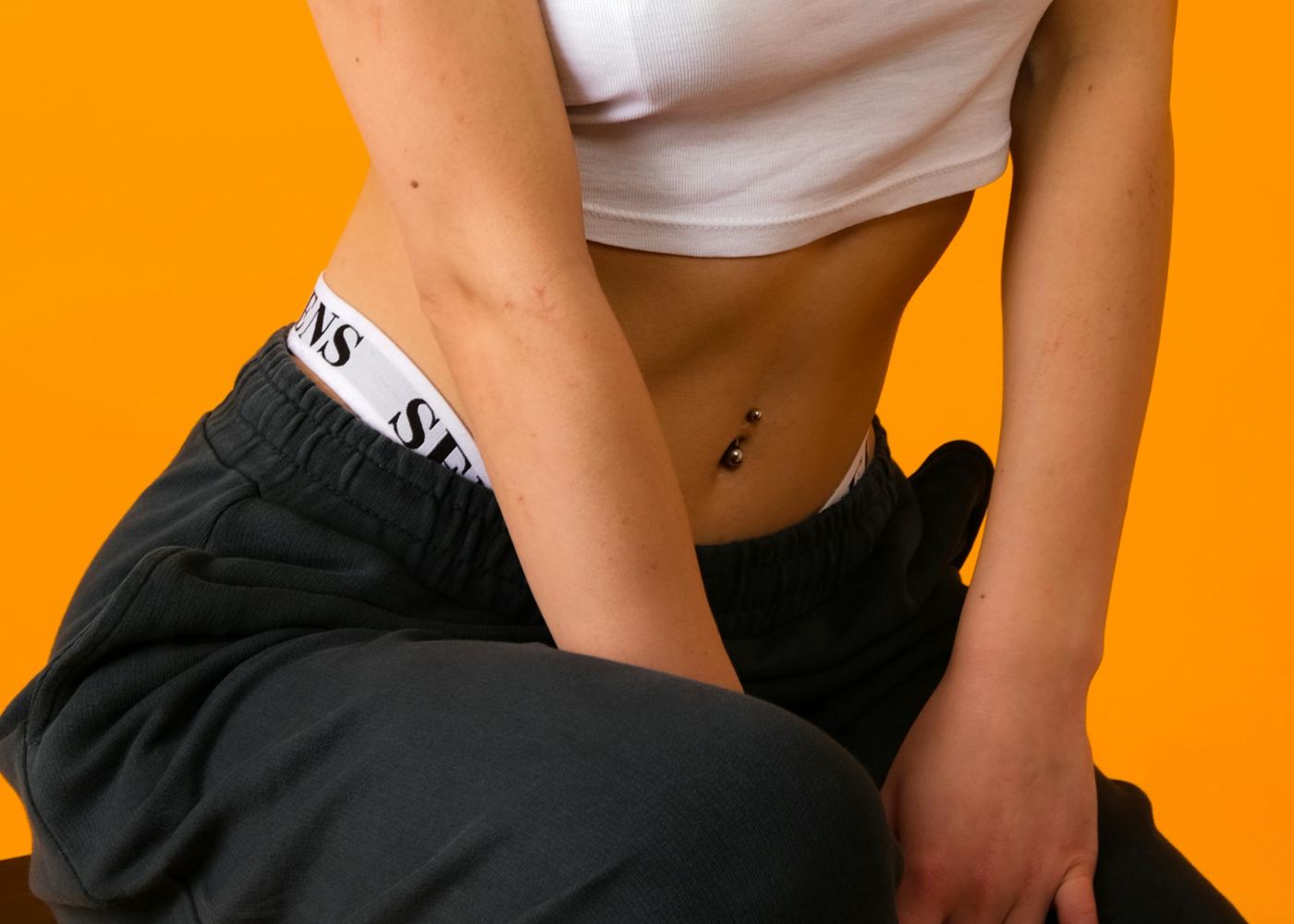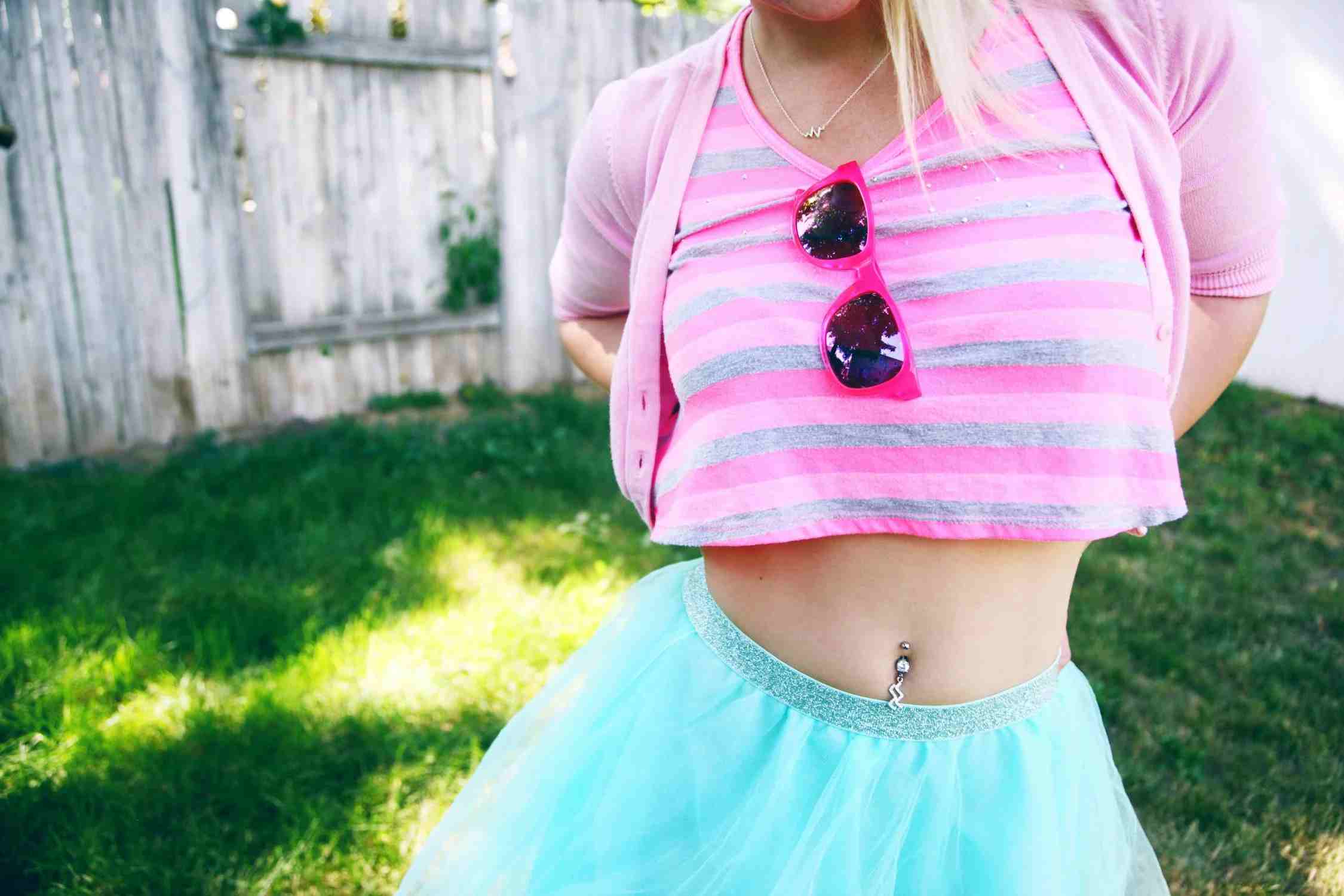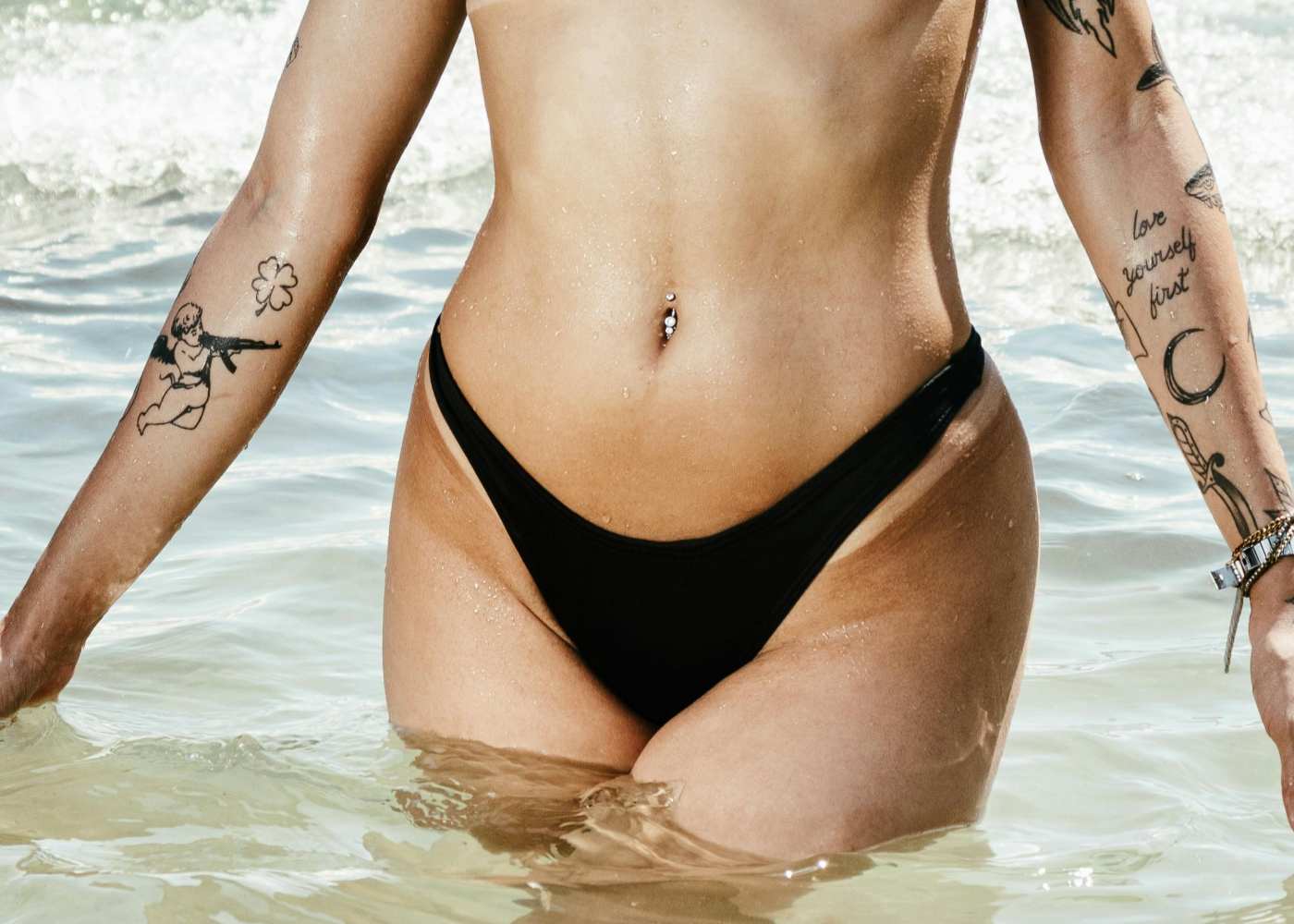You know, sometimes the simplest things can make the biggest difference. Like keeping your belly button piercing clean—it's a small daily task, but it plays a huge role in how well your piercing heals. If you've ever wondered how to clean a belly button piercing without fuss, you are at the right spot. This blog will walk you through the essential cleaning steps, aftercare tips, and common mistakes to avoid, so you can keep your piercing looking great and feeling comfortable for years to come.

Belly button piercing is a procedure where a piece of jewelry is inserted through the skin around the navel, typically at the upper edge. It’s achieved by puncturing the skin with a needle to create a hole for the jewelry. The piercing is commonly done for decorative purposes.

However, it is not available for everyone. In the U.S., for example, the age limitation for getting a belly button piercing varies by state. Generally, individuals must be at least 18 years old to get a piercing without parental consent. Minors, typically aged 16 or 17, may get a piercing with parental consent in some states like Florida.
Proper care is essential for a belly button piercing to heal well. Here's how to clean navel piercing effectively, whether it's newly done or has developed an infection. Follow these steps to ensure your piercing stays healthy and comfortable.
If you've just gotten a new belly button piercing, you’re required to clean and sterilize it carefully for healing. Here's a straightforward guide to keep your piercing clean and healthy.

1.Wash Your Hands Thoroughly
Before you start cleaning your belly button piercing, always wash your hands thoroughly with antibacterial soap and water. It helps to prevent the transfer of bacteria and keeps your piercing site as clean as possible.
2.Clean Gently
When cleaning your piercing, it's important to be as gentle as possible to avoid irritation. Using warm water is okay. You can cup your hand under the piercing and let the water flow over it for a minute or two. Running water can flush out any debris without irritating the skin.
3.Dab with a Cotton Ball or Gauze
After soaking, you can take a clean cotton ball or gauze and gently dab the area around the piercing. It's normal to see some white or yellow fluid—this is a natural part of the healing process. Avoid picking at any crust that forms, as it's a protective barrier for your skin.
4.Pat the Area Dry with a Fresh Paper Towel or Tissue
You can dry the area by gently patting it with a fresh paper towel or tissue. Steer clear of cloth towels, as they can harbor bacteria and may irritate your piercing.
5.Apply Lavender Oil If the Doctor Recommends
If your doctor recommends it, you can use lavender oil to help with healing and reduce any swelling around the piercing. Lavender oil is a natural remedy known for its soothing properties, but only use it if advised by a healthcare professional. It is noted that avoid applying anything else to your belly button, such as lotions, oils, or perfumes, unless specifically instructed by your doctor.
How about the new belly button piercing getting infected? If that happens, taking swift action is key. Here's how to properly clean and care for an infected piercing.
1.Know the Signs of Infection
The signs of infection can be subtle at first. Here's what else you should watch out for. If you have a few symptoms, you should take immediate action:
2.Soothe with a Warm Compress
If you suspect an infection, start by soothing the area with a warm compress. You can take a clean, warm cloth and gently press it against the piercing for about three minutes. It helps increase blood flow to the area, which can speed up the healing process and relieve discomfort. You can repeat this 3 to 4 times a day to keep the infection from worsening.
3.Clean with Antiseptic Cleaner
Cleaning an infected piercing requires more than just warm water. You need an antiseptic cleaner specifically designed for piercings. Apply the cleaner gently around the infected area, being careful not to aggravate the skin further.
4.Consult the Doctor If Necessary
Never hesitate to seek professional help when you're concerned about the severity of the infection. A healthcare professional can provide more targeted treatment, such as prescribing antibiotics or offering other medical advice.
Knowing how to clean a pierced belly button is just the start, and proper care can speed up a healthy healing process. Here are some additional tips to ensure your piercing heals properly:

Improper cleaning methods can lead to infections, irritation, and prolonged healing. Here are common mistakes to avoid when learning how to properly clean a belly button piercing to ensure you don't run into complications.

In the initial stages of healing, it's essential to clean your belly button piercing twice a day—once in the morning and once before bed. This frequency is key to preventing infection and promoting healing. After the first few weeks (roughly 4-6 weeks), you may reduce the frequency to once a day, especially if the piercing shows signs of improvement. However, you should continue to clean it regularly until it is fully healed, which can take anywhere from six months to a year.
Note: If you notice irritation or signs of infection, increase the frequency of cleanings to help manage symptoms and prevent worsening.
You've invested in your piercing, so giving it the right care is essential. By following the comprehensive tips about how to clean a belly button piercing, along with proper aftercare practices, you're all set to keep it looking great and feeling comfortable, so you can enjoy your piercing for years to come. Remember, a clean belly piercing isn't just about preventing problems—it's about ensuring your piercing remains a beautiful part of you.
It's best to avoid moving or twisting your belly button piercing while cleaning, especially during the initial healing period. Moving the jewelry can cause irritation, disrupt the healing process, and potentially introduce bacteria into the piercing site. You should allow the piercing to heal naturally and only move the jewelry if necessary.
Common indicators include persistent redness, swelling, and warmth around the piercing site. If you notice a yellow or green discharge, accompanied by an unpleasant odor, this could also be a sign of infection. Additionally, pain that intensifies over time rather than subsiding may further suggest an issue.
Yes. Salt water helps to cleanse the piercing site by drawing out impurities and reducing inflammation. However, you should avoid using excessively salty solutions as they irritate the skin.
Knowing how to change my belly button ring allows me to wear different expressions and styles for any occasion. Read our full guidelines to learn how!
Read MoreJewelry appraisal is highly beneficial when you plan on selling your collection or obtaining insurance for your pieces. Click the link for details!
Read MoreKnowing how to insure jewelry lets you provide protection to your valuables in case of thievery or lost. Read our insurance guidelines for details!
Read MoreKnowing how to wear engagement ring and wedding band lets you showcase your own style or cultural tradition. Read our ring and band guide for details!
Read More